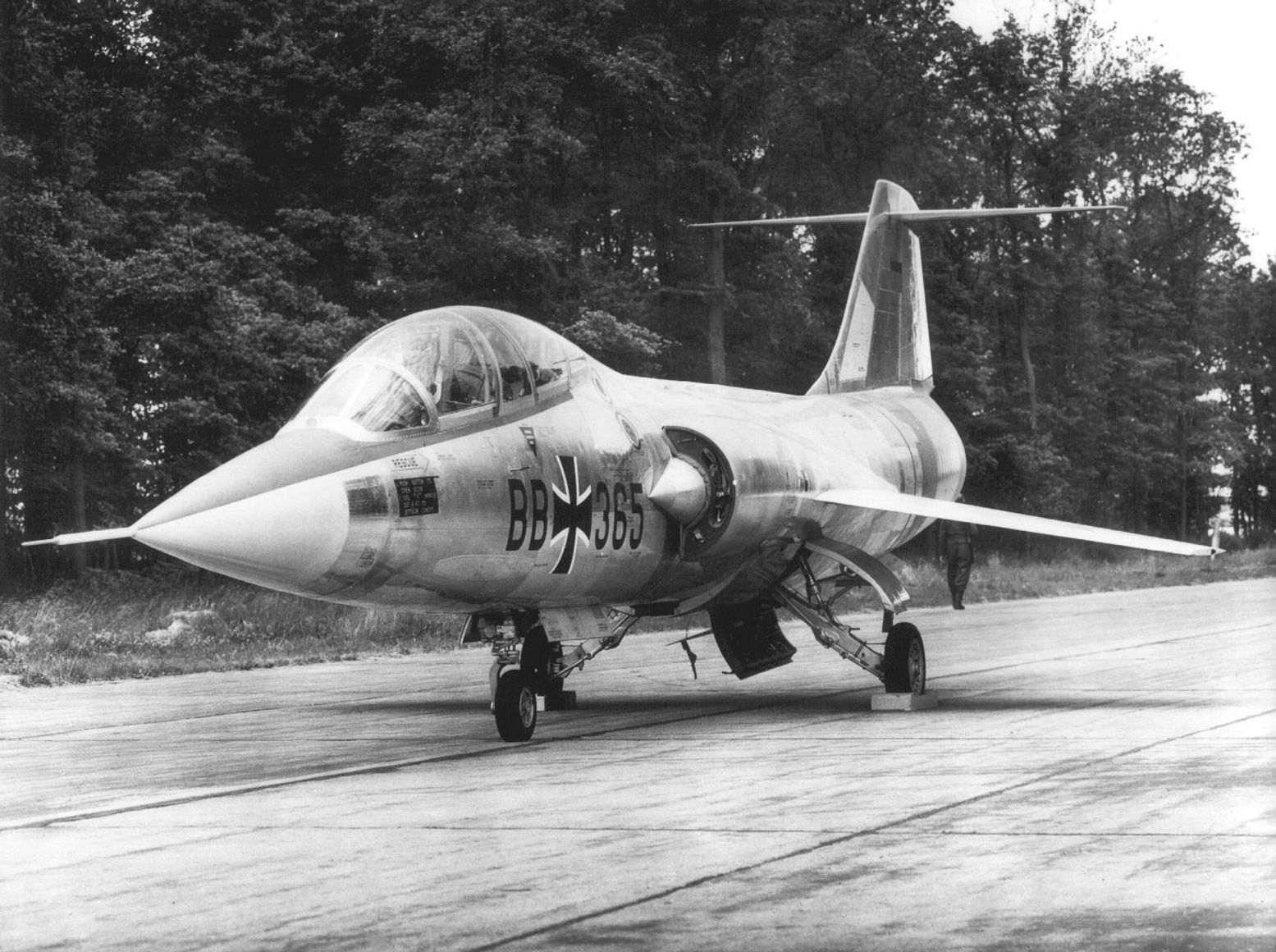-
Sign up or login, and you'll have full access to opportunities of forum.
You are using an out of date browser. It may not display this or other websites correctly.
You should upgrade or use an alternative browser.
You should upgrade or use an alternative browser.
Wtf And Oddities
- Thread starter phlebas
- Start date

Loxuru
Graf von Kreuzigung
Panic in The Netherlands. Yesterday, the Dutch Air Force’s very first F-35 arrived. In order to receive it with style, the fire brigade would douse it with water, while it would taxi to the ramp. But someone must have made a mistake, and it got doused with foam. Trouble! This could cause corrosion! Apparently, the world’s most expensive (but not technically most reliable, it seems) boy’s toy, has a very sensitive skin!
The error caused some turmoil, to find a solution to clean up the problem, although, the Dutch government had stated they were planning not to use the plane for the time being.
Oh, for the days of indestructable stuff, like the Starfighter and the Phantom.
The error caused some turmoil, to find a solution to clean up the problem, although, the Dutch government had stated they were planning not to use the plane for the time being.
Oh, for the days of indestructable stuff, like the Starfighter and the Phantom.
Darkprincess69
High Priestess of Slaanesh
I don't think the starfighter was particularly reliable - when I was growing up there were always reports on the news about these things crashing!Panic in The Netherlands. Yesterday, the Dutch Air Force’s very first F-35 arrived. In order to receive it with style, the fire brigade would douse it with water, while it would taxi to the ramp. But someone must have made a mistake, and it got doused with foam. Trouble! This could cause corrosion! Apparently, the world’s most expensive (but not technically most reliable, it seems) boy’s toy, has a very sensitive skin!
The error caused some turmoil, to find a solution to clean up the problem, although, the Dutch government had stated they were planning not to use the plane for the time being.
Oh, for the days of indestructable stuff, like the Starfighter and the Phantom.
Apparently the German air force bought loads of these and they came to be called widowmakers

Loxuru
Graf von Kreuzigung
I remember those times as well. F-104 was a child of its time : post Korean War, but before the ICBM era. It was designed as a clear-weather interceptor (meaning, he would wage air combat in the vertical direction – for dog fights, horizontal confrontations, its wings were too small to make short turns). When enemy aircraft intruded, F-104, would take off, climb at high speed (it was the first warplane able to fly Mach 2 while cruising) and fire an air-to-to-air missile to the intruder, at a safe distance of tens of kilometers. The other task was to deliver a nuclear bomb at high speed, high altitude and preferably clear weather, and afterwards make its way out as fast at is could.I don't think the starfighter was particularly reliable - when I was growing up there were always reports on the news about these things crashing!
Apparently the German air force bought loads of these and they came to be called widowmakers
Due to its design for fast and high altitude operations, the design was focused on reducing weight and drag. The small trapezoid wings are the most suitable shape for such operations, but the trade-off was, that the Starfighter was unforgiving for errors made at low altitude or low speed, and difficult to keep under control when something went wrong in such conditions.
Many air forces, like the German Luftwaffe, intended to use it for all weather and low altitude operations. This needed for instance extra equipment and hence extra weight. The big problem turned out to be lack of adequate training of the pilots.
Indeed, the Starfighter had a lot of dark nicknames, such as widowmaker or flying coffin. Curiously, the Spanish Air Force, who trained the F-104 only for its assigned tasks, did not have a single loss.
Darkprincess69
High Priestess of Slaanesh
The Germans suffered huge losses with this thing though - according to my (admittedly brief) googling, they bought 916 of them and lost 292 of them in crashes, costing the lives of 115 pilots. That's a really terrible record whichever way you dress it upI remember those times as well. F-104 was a child of its time : post Korean War, but before the ICBM era. It was designed as a clear-weather interceptor (meaning, he would wage air combat in the vertical direction – for dog fights, horizontal confrontations, its wings were too small to make short turns). When enemy aircraft intruded, F-104, would take off, climb at high speed (it was the first warplane able to fly Mach 2 while cruising) and fire an air-to-to-air missile to the intruder, at a safe distance of tens of kilometers. The other task was to deliver a nuclear bomb at high speed, high altitude and preferably clear weather, and afterwards make its way out as fast at is could.
Due to its design for fast and high altitude operations, the design was focused on reducing weight and drag. The small trapezoid wings are the most suitable shape for such operations, but the trade-off was, that the Starfighter was unforgiving for errors made at low altitude or low speed, and difficult to keep under control when something went wrong in such conditions.
Many air forces, like the German Luftwaffe, intended to use it for all weather and low altitude operations. This needed for instance extra equipment and hence extra weight. The big problem turned out to be lack of adequate training of the pilots.
Indeed, the Starfighter had a lot of dark nicknames, such as widowmaker or flying coffin. Curiously, the Spanish Air Force, who trained the F-104 only for its assigned tasks, did not have a single loss.

This is the article I found on this;

The Tragic Reason Why Germany Hated Its F-104 Starfighters
It was called "the widow maker."
Which pretty much confirms a lot of what you said in your post, and also hints at political corruption, which again would not be surprising...
Rias
Neko Girl
115 element song??The Germans suffered huge losses with this thing though - according to my (admittedly brief) googling, they bought 916 of them and lost 292 of them in crashes, costing the lives of 115 pilots. That's a really terrible record whichever way you dress it up
This is the article I found on this;

The Tragic Reason Why Germany Hated Its F-104 Starfighters
It was called "the widow maker."nationalinterest.org
Which pretty much confirms a lot of what you said in your post, and also hints at political corruption, which again would not be surprising...

The Germans suffered huge losses with this thing though - according to my (admittedly brief) googling, they bought 916 of them and lost 292 of them in crashes, costing the lives of 115 pilots. That's a really terrible record whichever way you dress it up
This is the article I found on this;

The Tragic Reason Why Germany Hated Its F-104 Starfighters
It was called "the widow maker."nationalinterest.org
Which pretty much confirms a lot of what you said in your post, and also hints at political corruption, which again would not be surprising...
The U.S. Navy just launched another carrier. I think I read somewhere that in the event of a major war, these things are floating coffins ... a case of the military preparing to re-fight the last war, and a case of profit for shipyards overriding the need to do something different.
FrankO
Executioner
Mmmm .... it's hard not to see a fleet carrier simply as a target in today (and tomorrow's) world. Navy's, air forces and armies the world over seem to be fighting the last war with their big metal solutions ... when the military trends are to make smaller units more capable with cheaper, smarter, more dangerous AI and remote operator driven solutions.The U.S. Navy just launched another carrier. I think I read somewhere that in the event of a major war, these things are floating coffins ... a case of the military preparing to re-fight the last war, and a case of profit for shipyards overriding the need to do something different.
Cheap smart stealthy always present electric torpedos/mines/weapons platforms being served by solar powered stations, smart missiles that make the Exocet of the Falklands campaign look primitive, hand held personnel launched artillery and missiles, EMP weapons that could shut down whole battle groups or render them vulnerable for critical periods, computer hacking and network intrusion ... the trend is for the small battlefield units to become infinitely more powerful and for the larger units to have a target painted on themselves.
That said, the US is probably the only country in the world that can even afford a blue water navy now ... China and Russia have some blue water capabilities, but the raw power projection of multiple carrier battlegroups that at present the US has is a force projection advantage that no other country in the world can compete with.
But as you say ... it remains to be seen how relevant that continues to be in the face of cheaper sneakier more ubiquitous technological alternatives that can be expected over the next few years ... and which are appearing incrementally even now.
Another naval example ... submarines are a powerful weapon not because they go haring around at top speed underwater and are difficult to hit because they are underwater, they are powerful because they are stealthy, creep around ate slow speed when on station, and are difficult to detect. But if nations without a viable sub fleet populated their waters with acoustic stations linked to battle spaces, filled with cheap disposable smart mines/torpedoes that are always on station and ready to deploy ... well, lets just say that life could get a hell of a lot more precarious for your average nuclear or conventional boat.
These are the battles we need to prepare for today .... not the multi-billion dollar weapons platforms of the past.
For now I'll still place my bet on the nine carrier fleets and the submarines...Mmmm .... it's hard not to see a fleet carrier simply as a target in today (and tomorrow's) world. Navy's, air forces and armies the world over seem to be fighting the last war with their big metal solutions ... when the military trends are to make smaller units more capable with cheaper, smarter, more dangerous AI and remote operator driven solutions.
Cheap smart stealthy always present electric torpedos/mines/weapons platforms being served by solar powered stations, smart missiles that make the Exocet of the Falklands campaign look primitive, hand held personnel launched artillery and missiles, EMP weapons that could shut down whole battle groups or render them vulnerable for critical periods, computer hacking and network intrusion ... the trend is for the small battlefield units to become infinitely more powerful and for the larger units to have a target painted on themselves.
That said, the US is probably the only country in the world that can even afford a blue water navy now ... China and Russia have some blue water capabilities, but the raw power projection of multiple carrier battlegroups that at present the US has is a force projection advantage that no other country in the world can compete with.
But as you say ... it remains to be seen how relevant that continues to be in the face of cheaper sneakier more ubiquitous technological alternatives that can be expected over the next few years ... and which are appearing incrementally even now.
Another naval example ... submarines are a powerful weapon not because they go haring around at top speed underwater and are difficult to hit because they are underwater, they are powerful because they are stealthy, creep around ate slow speed when on station, and are difficult to detect. But if nations without a viable sub fleet populated their waters with acoustic stations linked to battle spaces, filled with cheap disposable smart mines/torpedoes that are always on station and ready to deploy ... well, lets just say that life could get a hell of a lot more precarious for your average nuclear or conventional boat.
These are the battles we need to prepare for today .... not the multi-billion dollar weapons platforms of the past.
Your thoughts on new weapon advancements fails to recognize defensive strategies that that we will never know about until they are obsolete.
I would also point out the F-15 was brought into service in 1976 and they are still being built and after 43 years not one has been lost in areal combat!
...yes, it has been upgraded a more than a few times...
Mmmm .... it's hard not to see a fleet carrier simply as a target in today (and tomorrow's) world. Navy's, air forces and armies the world over seem to be fighting the last war with their big metal solutions ... when the military trends are to make smaller units more capable with cheaper, smarter, more dangerous AI and remote operator driven solutions.
Cheap smart stealthy always present electric torpedos/mines/weapons platforms being served by solar powered stations, smart missiles that make the Exocet of the Falklands campaign look primitive, hand held personnel launched artillery and missiles, EMP weapons that could shut down whole battle groups or render them vulnerable for critical periods, computer hacking and network intrusion ... the trend is for the small battlefield units to become infinitely more powerful and for the larger units to have a target painted on themselves.
That said, the US is probably the only country in the world that can even afford a blue water navy now ... China and Russia have some blue water capabilities, but the raw power projection of multiple carrier battlegroups that at present the US has is a force projection advantage that no other country in the world can compete with.
But as you say ... it remains to be seen how relevant that continues to be in the face of cheaper sneakier more ubiquitous technological alternatives that can be expected over the next few years ... and which are appearing incrementally even now.
Another naval example ... submarines are a powerful weapon not because they go haring around at top speed underwater and are difficult to hit because they are underwater, they are powerful because they are stealthy, creep around ate slow speed when on station, and are difficult to detect. But if nations without a viable sub fleet populated their waters with acoustic stations linked to battle spaces, filled with cheap disposable smart mines/torpedoes that are always on station and ready to deploy ... well, lets just say that life could get a hell of a lot more precarious for your average nuclear or conventional boat.
These are the battles we need to prepare for today .... not the multi-billion dollar weapons platforms of the past.
Thanks for this detailed and impressively knowledgeable reply!

I'm sure this was meant for meThanks for this detailed and impressively knowledgeable reply!

Beate
Magistrate
Starfighters were pure interceptors. My father flew such a plane.
Once he got off with the ejection seat and was afterwards in the administration of the squadron.
He always told me the Starfighter is a very good race car in the air, but he doesn't forgive any mistake.
Unfortunately the politicians made the mistake of making the interceptor a fighter bomber for the low level flight.
That could not go well.
One mistake was often enough and the fighter crashed.
My father always said that there were many colleagues who flew the Starfighter into the ground in front of a village or a city to keep the damage to a minimum. He was always proud of the pilots.
He kept saying.
Starfighter doesn't forgive, but good pilots like the hunter.
Bad pilots are poor pilots.
Once he got off with the ejection seat and was afterwards in the administration of the squadron.
He always told me the Starfighter is a very good race car in the air, but he doesn't forgive any mistake.
Unfortunately the politicians made the mistake of making the interceptor a fighter bomber for the low level flight.
That could not go well.
One mistake was often enough and the fighter crashed.
My father always said that there were many colleagues who flew the Starfighter into the ground in front of a village or a city to keep the damage to a minimum. He was always proud of the pilots.
He kept saying.
Starfighter doesn't forgive, but good pilots like the hunter.
Bad pilots are poor pilots.
FrankO
Executioner
For now I'll still place my bet on the nine carrier fleets and the submarines...
Your thoughts on new weapon advancements fails to recognize defensive strategies that that we will never know about until they are obsolete.
I would also point out the F-15 was brought into service in 1976 and they are still being built and after 43 years not one has been lost in areal combat!
...yes, it has been upgraded a more than a few times...
Yeah ... but:

1. In WW2 conventional wisdom was that the battleship would dominate the seas. Taranto, Pearl Harbour, a U-Boat incursion at Britain's Scapa Flow, and finally the experience of the later Pacific War showed that this was grossly incorrect as planes worth a few thousand bucks, and U-Boats and submarines built for 1/20th of the cost of a battle wagon sunk the battlewagons with monotonous regularity. Even 70,000 ton behemoths like Yamato and Musashi were sunk by these incomparably smaller but more deadly weapons platforms.
I'm guessing that this trend has only accelerated over the years.
And the top naval brass across the world never even realised that their battlewagons were obsolete. Billy Mitchell did ... but he was an airforce bloke not worth listening to.
2. A smart opposition can mount many attacks from hundreds of different vectors and directions for way less than the cost of the big weapons systems they attack. Most of their attacks could be so stealthy they are never detected until the big metal is lost.
3. The F15 was and is still a fine aircraft ... a great interceptor fighter ... but its third or fourth generation now. Up against anything that 90% of the world could put up against it today, it would still defeat them all the time. US avionics and weapons are still state of the art, and they are what have been upgraded ... not so much the power units, airframes and performance related hardware.
But stealthy low heat signature 5th generation fighters like the now abandoned F22, and the super complex (and hence vulnerable with multiple possible points of failure) F35, and Russian and Chinese equivalents would probably defeat the F15's early 2000's avionics for targeting, acquisition, weapons lock on and other capabilities 50% of the time or better. (That's why the brass and services have developed these replacements.) The 5th Gen fighters will suckseeds like toothless parrots as far as flight performance and manoeuvrability factor goes ... but if you can't see them until they are upon you, and you can't acquire them on your radar, and you can't get a weapons lock your hyper performance F15, or Sukhoi 34, or Chinese equivalent isn't doing much more than just swanning harmlessly around.
I wouldn't be too concerned however ... even if the F15 is on the verge of obsolescence, the US Air Force has done the hard yards developing its replacement.
For mine, I would have continued with the F22 ... because that's one hell of a 5th Gen stealth package there and they'd pretty much worked out the kinks before Congress dropped it. Factor in that it was early in its development cycle (think the Model1A Spitfire in 1939-40 .... that developed through 13 or 14 different models over the next few years each of which was an improvement - performance, armament and capability wise ... on the earlier version). Yes it was expensive, but the unit cost would have come down as more came of the production line. But Congress elected to shelve it for the so-called 'cheaper' F35 which has now had cost over-runs and delays that put its unit cost into the realms of that required by the F22.
The F35 has made too many 'multi-role' compromises to be the dream machine the F22 was (and is) ... and has pretty much hamstrung itself as a result. But you can't combine complex fighter interceptor, fighter bomber and naval fighter roles in one aircraft without making compromises. And this compromises affect performance and reliability.
Finally, as I said in the post to Barb each of the the US's carrier battlegroups give it force projection capabilities commensurate with the whole airforce or better of the countries they lay off from. 13 or 14 of them iis one hell of a security blanket. Abandoning them would be a big time mistake ...
All I said was that they are much more vulnerable than the Navy seems to assume, no matter what the US Navy does to harden their defences (and they already surround them with thirty of forty attendant ships whose whole job is to see that NOTHING threatens the carrier).
Looking for that distinctive gift for Christmas?

 brightonbodycasting.com
brightonbodycasting.com
get a grip



his and hers - matching pair

Door knobs!

revealing





Genitals - Brighton Body Casting
JTNDc2NyaXB0JTIwdHlwZSUzRCUyMnRleHQlMkZqYXZhc2NyaXB0JTIyJTNFJTBBd2luZG93Lm9ubG9hZCUyMCUzRCUyMGZ1bmN0aW9uJTI4JTI5JTdCJTBBJTBBJTJGJTJGSU5JVElBTCUyMEhJREVTJTBBJTIwJTI0JTIwJTI4ZnVuY3Rpb24lMjglMjklN0IlM
 brightonbodycasting.com
brightonbodycasting.com
get a grip



his and hers - matching pair

Door knobs!

revealing




RacingRodent
Consul
Mmmm .... it's hard not to see a fleet carrier simply as a target in today (and tomorrow's) world. Navy's, air forces and armies the world over seem to be fighting the last war with their big metal solutions ... when the military trends are to make smaller units more capable with cheaper, smarter, more dangerous AI and remote operator driven solutions.
Cheap smart stealthy always present electric torpedos/mines/weapons platforms being served by solar powered stations, smart missiles that make the Exocet of the Falklands campaign look primitive, hand held personnel launched artillery and missiles, EMP weapons that could shut down whole battle groups or render them vulnerable for critical periods, computer hacking and network intrusion ... the trend is for the small battlefield units to become infinitely more powerful and for the larger units to have a target painted on themselves.
That said, the US is probably the only country in the world that can even afford a blue water navy now ... China and Russia have some blue water capabilities, but the raw power projection of multiple carrier battlegroups that at present the US has is a force projection advantage that no other country in the world can compete with.
But as you say ... it remains to be seen how relevant that continues to be in the face of cheaper sneakier more ubiquitous technological alternatives that can be expected over the next few years ... and which are appearing incrementally even now.
Another naval example ... submarines are a powerful weapon not because they go haring around at top speed underwater and are difficult to hit because they are underwater, they are powerful because they are stealthy, creep around ate slow speed when on station, and are difficult to detect. But if nations without a viable sub fleet populated their waters with acoustic stations linked to battle spaces, filled with cheap disposable smart mines/torpedoes that are always on station and ready to deploy ... well, lets just say that life could get a hell of a lot more precarious for your average nuclear or conventional boat.
These are the battles we need to prepare for today .... not the multi-billion dollar weapons platforms of the past.
It is in fact hard to see an enemy carrier at all. The weapons that journalists talk about in breathless tones as making the carrier obsolete can all be countered. In fact many of the supposed super ballistic and cruise missile systems that journalists espouse were rushed into service once it became apparent that they are not actually likely to perform as advertised. The carrier on the other hand has access both to bleeding edge systems and mature weapons systems such as but not limited to manned aircraft and high performance drones.
It is worth noting that a carrier can hunt submarines with modern airborne ASW platforms from hundreds of miles away.
Mind you this is not to dismiss the modern attack submarine, it has evolved into a serious warship from the weapon of threat that served in the world wars of the 20th century. That said though it is not yet a weapon of decision on the same level as the carrier.
The three blue water navies of the current era all see a place for the carrier and so too in fact the aspirant blue water navies of China, India and hey umpteenth time of trying Russia.
The current historical trend as with the previous historical trend as all too likely the future historical trend is for journalists to completely fail to attempt to understand what actually happens in military operations. So we are seeing with the carrier the same claims of demise that occurred with the battleship which never actually resulted in the loss of a contemporary battleship to submarine attack, there is in fact one case of a dreadnought the Szent Istvan getting sunk by an Italian torpedo boat but the torpedo boat is recognised as a limited weapon. Older battleships* it is true got sunk by submarines and it is interesting that carriers got sunk by submarines in World War 2 but the battleship went obsolete not because it was a death trap but because aircraft transported by carriers could settle matters before even modern fast battleships could get into range.
Carriers also demonstrated that they were far and away more robust than was anticipated and modern carriers are far and away refined in their construction and damage control methods over carriers of that era. In addition carriers are invaluable assets in many circumstances outside of war and that is an awful large part of the job navies have always done.
So yes by all means read 'defence' journalists when they tell you the carrier is dead (ignoring it is not) and the tank is dead (ignoring experience from Afghanistan and elsewhere that it is not) but perhaps bear in mind they have a woeful record of predicting the future.
* and by world war two this meant ones of more than 20 years old even the HMS Nelson surviving underwater attack on several occasions and it was no spring chicken
Last edited:
Yeah ... but:
1. In WW2 conventional wisdom was that the battleship would dominate the seas. Taranto, Pearl Harbour, a U-Boat incursion at Britain's Scapa Flow, and finally the experience of the later Pacific War showed that this was grossly incorrect as planes worth a few thousand bucks, and U-Boats and submarines built for 1/20th of the cost of a battle wagon sunk the battlewagons with monotonous regularity. Even 70,000 ton behemoths like Yamato and Musashi were sunk by these incomparably smaller but more deadly weapons platforms.
I'm guessing that this trend has only accelerated over the years.
And the top naval brass across the world never even realised that their battlewagons were obsolete. Billy Mitchell did ... but he was an airforce bloke not worth listening to.
2. A smart opposition can mount many attacks from hundreds of different vectors and directions for way less than the cost of the big weapons systems they attack. Most of their attacks could be so stealthy they are never detected until the big metal is lost.
3. The F15 was and is still a fine aircraft ... a great interceptor fighter ... but its third or fourth generation now. Up against anything that 90% of the world could put up against it today, it would still defeat them all the time. US avionics and weapons are still state of the art, and they are what have been upgraded ... not so much the power units, airframes and performance related hardware.
But stealthy low heat signature 5th generation fighters like the now abandoned F22, and the super complex (and hence vulnerable with multiple possible points of failure) F35, and Russian and Chinese equivalents would probably defeat the F15's early 2000's avionics for targeting, acquisition, weapons lock on and other capabilities 50% of the time or better. (That's why the brass and services have developed these replacements.) The 5th Gen fighters will suckseeds like toothless parrots as far as flight performance and manoeuvrability factor goes ... but if you can't see them until they are upon you, and you can't acquire them on your radar, and you can't get a weapons lock your hyper performance F15, or Sukhoi 34, or Chinese equivalent isn't doing much more than just swanning harmlessly around.
I wouldn't be too concerned however ... even if the F15 is on the verge of obsolescence, the US Air Force has done the hard yards developing its replacement.
For mine, I would have continued with the F22 ... because that's one hell of a 5th Gen stealth package there and they'd pretty much worked out the kinks before Congress dropped it. Factor in that it was early in its development cycle (think the Model1A Spitfire in 1939-40 .... that developed through 13 or 14 different models over the next few years each of which was an improvement - performance, armament and capability wise ... on the earlier version). Yes it was expensive, but the unit cost would have come down as more came of the production line. But Congress elected to shelve it for the so-called 'cheaper' F35 which has now had cost over-runs and delays that put its unit cost into the realms of that required by the F22.
The F35 has made too many 'multi-role' compromises to be the dream machine the F22 was (and is) ... and has pretty much hamstrung itself as a result. But you can't combine complex fighter interceptor, fighter bomber and naval fighter roles in one aircraft without making compromises. And this compromises affect performance and reliability.
Finally, as I said in the post to Barb each of the the US's carrier battlegroups give it force projection capabilities commensurate with the whole airforce or better of the countries they lay off from. 13 or 14 of them iis one hell of a security blanket. Abandoning them would be a big time mistake ...
All I said was that they are much more vulnerable than the Navy seems to assume, no matter what the US Navy does to harden their defences (and they already surround them with thirty of forty attendant ships whose whole job is to see that NOTHING threatens the carrier).
It is in fact hard to see an enemy carrier at all. The weapons that journalists talk about in breathless tones as making the carrier obsolete can all be countered. In fact many of the supposed super ballistic and cruise missile systems that journalists espouse were rushed into service once it became apparent that they are not actually likely to perform as advertised. The carrier on the other hand has access both to bleeding edge systems and mature weapons systems such as but not limited to manned aircraft and high performance drones.
It is worth noting that a carrier can hunt submarines with modern airborne ASW platforms from hundreds of miles away.
Mind you this is not to dismiss the modern attack submarine, it has evolved into a serious warship from the weapon of threat that served in the world wars of the 20th century. That said though it is not yet a weapon of decision on the same level as the carrier.
The three blue water navies of the current era all see a place for the carrier and so too in fact the aspirant blue water navies of China, India and hey umpteenth time of trying Russia.
The current historical trend as with the previous historical trend as all too likely the future historical trend is for journalists to completely fail to attempt to understand what actually happens in military operations. So we are seeing with the carrier the same claims of demise that occurred with the battleship which never actually resulted in the loss of a contemporary battleship to submarine attack, there is in fact one case of a dreadnought the Szent Istvan getting sunk by an Italian torpedo boat but the torpedo boat is recognised as a limited weapon. Older battleships* it is true got sunk by submarines and it is interesting that carriers got sunk by submarines in World War 2 but the battleship went obsolete not because it was a death trap but because aircraft transported by carriers could settle matters before even modern fast battleships could get into range.
Carriers also demonstrated that they were far and away more robust than was anticipated and modern carriers are far and away refined in their construction and damage control methods over carriers of that era. In addition carriers are invaluable assets in many circumstances outside of war and that is an awful large part of the job navies have always done.
So yes by all means read 'defence' journalists when they tell you the carrier is dead (ignoring it is not) and the tank is dead (ignoring experience from Afghanistan and elsewhere that it is not) but perhaps bear in mind they have a woeful record of predicting the future.
* and by world war two this meant ones of more than 20 years old even the HMS Nelson surviving underwater attack on several occasions and it was no spring chicken
Ok. I have to keep saying it because it’s true. I learn so much from you guys. CF is truly an educational place!
RacingRodent
Consul
Yeah ... but:
1. In WW2 conventional wisdom was that the battleship would dominate the seas. Taranto, Pearl Harbour, a U-Boat incursion at Britain's Scapa Flow, and finally the experience of the later Pacific War showed that this was grossly incorrect as planes worth a few thousand bucks, and U-Boats and submarines built for 1/20th of the cost of a battle wagon sunk the battlewagons with monotonous regularity. Even 70,000 ton behemoths like Yamato and Musashi were sunk by these incomparably smaller but more deadly weapons platforms.
Except that is not true it is a myth peddled by those who do not study what navies were actually thinking and doing between the Word Wars. The American Two Ocean Navy Act for example specified 18 carriers to 7 battleships. The Committee for Imperial Defence (British) favoured the carrier but recommended new battleship construction as the effectiveness of carrier aviation and the circumstance under which it was effective were not fully understood and there were still situations in which carriers might find themselves vulnerable to surface warships if unsupported.
There were in fact numerous battleship versus battleship actions in the Atlantic such as Hood and Prince of Wales versus Bismarck and King George V versus Scharnhorst, the Pacific such as South Dakota and Washington versus Karishma and the Mediterranean.
Further but battleships were still retained for a while into the Cold War as high seas in the North Sea for example could curtail carrier operations and you wanted something along that could swat a Sverdlov if it loomed out of the mists...even blipped on radar display.






